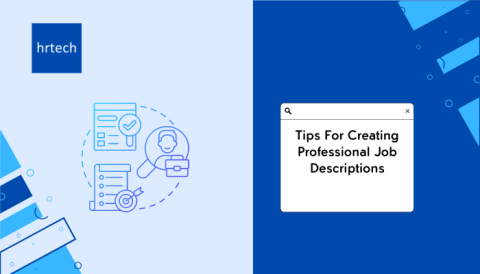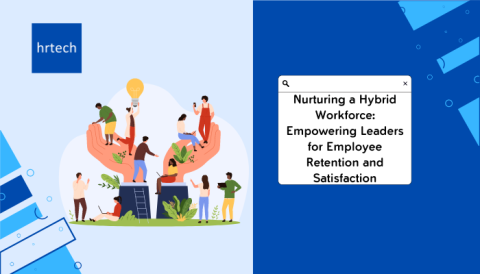Introduction
In today’s workplace, where talent retention, engagement, and productivity directly impact business performance, companies are rethinking how they manage the employee lifecycle. One approach that’s becoming central to successful HR strategies is the employee experience framework.
But what exactly is an employee experience framework? Why is it more than just a buzzword in modern HR? And most importantly, how can it help your business attract, retain, and empower top talent?
In this blog, we’ll break down the concept of an employee experience framework in simple, actionable terms. You’ll learn what it is, why it matters, the core pillars that shape it, and how to build one that aligns with your business goals.
Let’s get started.
TL;DR
- A structured employee experience framework improves engagement, retention, and aligns workforce efforts with business outcomes across all industries.
- Core pillars include onboarding, culture, feedback, development, well-being, recognition, and offboarding—each tailored to organizational needs.
- Implementing the framework requires stakeholder alignment, phased rollout, clear goals, and feedback-driven design for better adoption.
- Measuring ROI involves tracking KPIs like engagement, retention, productivity, and even customer satisfaction to show business value.
- Continuous improvement keeps the framework relevant through regular feedback, agile leadership, and alignment with evolving business objectives.
Understanding Employee Experience Framework
To truly grasp the value of a structured employee experience framework, it’s essential to look at its measurable impact. According to a Deloitte study, organizations that actively manage employee experience are 4.2 times more likely to outperform their peers in talent outcomes. Building a structured employee experience framework goes beyond traditional HR efforts, it serves as a powerful driver of business success.
Below are the key components that shape a practical employee experience framework:
- Recruitment & Onboarding: Smooth application, quick hiring, and role-based onboarding, common in IT and retail.
- Workplace Culture: Inclusive, feedback-driven environments supported by strong leadership, vital in healthcare and service sectors.
- Performance & Feedback: Continuous reviews, clear goals, and coaching, often used in startups and sales teams.
- Learning & Development: Skill-building through online courses, certifications, and mentorship, popular in BFSI and tech.
- Well-being & Balance: Flexi-hours, mental health support, and remote options, especially in hybrid workplaces.
- Recognition & Rewards: Regular peer shoutouts, bonuses, and career milestones, used in BPOs and hospitality.
- Exit & Alumni: Structured offboarding and alumni networks, seen in consulting and education industries.
Partner with Team Lease today to design a customized employee experience framework that attracts top talent and drives your business forward.
Having explored what an employee experience framework is, let’s understand why it plays a pivotal role in shaping your organization’s culture and outcomes.
Importance of an Employee Experience Framework
Building an effective employee experience framework isn’t just a nice-to-have; it’s a proven growth lever for modern businesses. Gallup found that companies with highly engaged employees enjoy a 21% boost in profitability and a 17% surge in productivity. A well-designed employee experience framework plays a crucial role in achieving these outcomes by aligning people, culture, and performance.
Here are some key benefits of implementing a practical framework:
- Attracts and Retains Top Talent: Transparent hiring, inclusive culture, and career growth paths, common in IT and finance, reduce attrition and draw skilled professionals.
- Enhances Productivity and Performance: Real-time feedback, clear KPIs, and recognition programs, widely used in startups and manufacturing, help employees perform at their best.
- Builds a Positive Workplace Culture: Open communication, wellness programs, and team-building initiatives, essential in healthcare and education, foster trust and a sense of belonging.
- Strengthens Brand Reputation: A consistent employee experience across all touchpoints, through digital tools and strong leadership, boosts the employer brand in industries such as retail and consulting.
Take the first step with TeamLease to transform your workplace culture and unlock higher employee engagement and productivity.
Recognizing its importance is the first step. The next is to explore how you can begin building a framework tailored to your people.
Creating an Employee Experience Framework
Designing a strong employee experience framework begins with actively listening to your workforce and turning insights into action. Feedback should guide everything, from communication style to policy updates. For example, after noticing low survey scores around flexibility, one team introduced hybrid work options tailored to department needs.
Below are the key steps to create a practical employee experience framework:
1. Assess the Current State Using Surveys and Feedback
- Collect Surveys and Pulse Checks: Utilize anonymous surveys to gauge employee satisfaction and pinpoint areas for improvement, as well as standard practices in the IT and retail sectors.
- Conduct Focus Groups and Interviews: Gain deeper insights through group discussions and one-on-one interviews, particularly in healthcare and education.
2. Define Goals and Align Them with Business Objectives
- Set Clear, Measurable Goals: Define objectives such as reducing turnover or boosting engagement scores, which are common in BFSI and manufacturing.
- Ensure Strategic Alignment: Align goals with company vision and growth plans to drive meaningful outcomes.
3. Map the Employee Journey to Identify Key Touchpoints
- Chart All Employee Stages: Map recruitment, onboarding, daily work, and exit phases, typically done with digital tools in tech and consulting firms.
- Identify Critical Moments: Focus on key touchpoints, such as the first 90 days, performance reviews, and offboarding, to target specific improvements.
Discover how TeamLease’s expertise can help you measure and maximize the impact of your employee experience initiatives for sustainable growth.
Once the foundation is set, it’s time to move from planning to action. Let’s look at how to design and implement the framework effectively.
Designing and Implementing the Framework
Successful implementation goes beyond planning, it requires understanding and addressing what matters most to your employees. Tailoring the framework makes it more relevant, usable, and embraced across teams. For instance, one organization customized its onboarding journey by role, leading to faster ramp-up and better early engagement.
Below are essential steps for effective design and implementation:
1. Tailor Solutions Based on Company Needs and Motivations
- Understand Unique Needs: Customize strategies based on company size, culture, and industry, such as flexible work arrangements for tech startups or a compliance focus for manufacturing.
- Address Employee Motivations: Align initiatives with what matters most to employees, like growth opportunities in BFSI or work-life balance in healthcare.
2. Use Effective Communication Strategies for Stakeholder Alignment
- Engage Leaders and Teams: Communicate goals and benefits to executives and employees through workshops, newsletters, and town halls.
- Foster Two-Way Dialogue: Encourage feedback and collaboration to build trust and ownership throughout the organization.
3. Implement in Phases and Pilot Test
- Start Small: Implement pilot programs in select departments or locations to gather data and refine your approaches.
- Scale Gradually: Utilize lessons learned from pilots to expand implementation, ensuring a smooth adoption process and minimizing disruptions.
Connect with TeamLease to create a seamless employee journey that empowers your workforce and strengthens your brand reputation.
Even with a well-crafted design, implementation can come with its hurdles. Here’s what typically gets in the way and how to tackle it.
Challenges in Implementation
Rolling out an employee experience framework often comes with resistance, especially when shifting long-standing processes or mindsets. Organizations frequently face hurdles in aligning teams, leadership, and workflows during the transition.
Below are common obstacles faced during implementation:
- Cultural Resistance: Employees may resist change if new practices conflict with established norms, particularly in traditional sectors such as manufacturing and finance.
- Lack of Leadership Engagement: Without visible support from leaders, initiatives struggle to gain momentum and trust across the organization.
- Inconsistent Communication: Mixed messages or infrequent updates create confusion and reduce employee buy-in, a phenomenon often observed in large, geographically dispersed companies.
- Resource Constraints: Limited budgets or staffing can hinder training, technology adoption, and ongoing program management, particularly in industries with tight margins, such as retail and hospitality.
- Misalignment with Company Culture: Frameworks that don’t reflect core values or employee expectations fail to resonate, causing disengagement.
- Difficulty Measuring Impact: Without clear metrics or feedback loops, it’s challenging to track progress and justify continued investment in the framework.
Let TeamLease support you in implementing a phased, data-driven employee experience framework tailored to your company’s unique needs.
Overcoming challenges is only part of the equation. Let’s now focus on how you can measure the real impact of your efforts.
Measuring the ROI of the Employee Experience Framework
Tracking the ROI of your employee experience framework is essential for demonstrating impact and refining your approach over time. It allows you to connect employee-focused initiatives with broader business goals. For instance, after launching a mentorship program, one organization noticed reduced attrition among new hires and improved team productivity.
Below are key areas to focus on when evaluating ROI:
1. Identify and Track Relevant KPIs
- Engagement Scores: Utilize employee surveys to gauge satisfaction and motivation, a common practice in tech and financial services.
- Retention Rates: Monitor turnover trends to assess workforce stability, a key factor in the retail and hospitality industries.
- Productivity Metrics: Analyze output and efficiency improvements through performance data in manufacturing and sales.
2. Combine Qualitative and Quantitative Data
- Employee Feedback: Collect open-ended survey responses and focus group insights for deeper understanding, used in healthcare and education.
- Performance Analytics: Leverage data from HR systems and project management tools to quantify progress.
3. Consider Customer Satisfaction as an Indirect Indicator
- Customer Experience Scores: An improved employee experience often leads to better service and higher customer satisfaction, particularly in the BPO and retail sectors.
- Net Promoter Scores (NPS): Track changes in customer loyalty as a reflection of the impact of employee engagement.
4. Use Continuous Monitoring and Reporting
- Regular Check-ins: Implement quarterly reviews to keep data current and actionable.
- Transparent Reporting: Share results with stakeholders to maintain alignment and support ongoing investment.
5. Link ROI to Business Outcomes
- Revenue Growth: Correlate employee experience improvements with sales increases or cost savings.
- Innovation and Quality: Track how engagement drives new ideas and reduces errors, critical in IT and manufacturing.
Join forces with TeamLease to cultivate a culture of continuous improvement that evolves in response to changing business objectives and workforce dynamics.
Measuring ROI gives you a snapshot, but employee experience is an evolving journey. Here’s how to keep improving it over time.
Continuous Improvement
Sustaining an employee experience framework means treating it as a living system, not a one-time project. Ongoing feedback, iteration, and adaptation help keep it relevant and effective. For example, after introducing remote work policies, one company revamped its recognition program based on monthly pulse surveys.
Below are key practices to ensure continuous improvement:
- Collect Regular Feedback: Utilize pulse surveys and suggestion boxes to gather real-time employee insights, widely adopted in the tech and healthcare industries.
- Analyze Data Trends: Track engagement scores and turnover rates over time to identify emerging issues or successes.
- Adjust Policies and Programs: Refine training, recognition, and wellness initiatives based on feedback and performance data to ensure ongoing improvement.
- Promote Agile Leadership: Encourage leaders to remain flexible and responsive to employee concerns, particularly in fast-paced industries such as startups and retail.
- Stay Aligned with Business Goals: Regularly review how the framework supports evolving organizational objectives.
- Encourage Employee Participation: Involve teams in co-creating solutions to boost ownership and relevance.
- Leverage Technology: Use digital platforms for continuous learning, communication, and feedback management.
- Celebrate Successes: Recognize improvements and milestones to reinforce a culture of growth and positivity.
Choosing established providers, such as TeamLease, can ensure compliance and industry-specific expertise, thereby facilitating a smoother transition.
Conclusion
A practical employee experience framework is more than just an HR tool; it’s a strategic driver that attracts talent, boosts productivity, and strengthens your brand. By prioritizing employee experience, businesses position themselves for sustainable success in today’s competitive market.
Embrace this framework to create a workplace where employees thrive, customers benefit, and your organization grows stronger every day.
If your organization is ready to unlock the full potential of an employee experience framework, TeamLease is here to help you achieve it. With a strong track record in workforce transformation, TeamLease excels at aligning strategies, processes, and technologies to create engaging workplaces that drive sustainable business growth.
Partner with TeamLease today and take the first step toward more innovative, more effective workforce solutions.
FAQs
1. What is an employee experience framework?
An employee experience framework is a structured approach that maps and improves every stage of the employee journey, from recruitment to exit, to boost engagement and productivity.
2. Can small or medium-sized businesses implement an employee experience framework?
Yes. The framework is flexible and can be customized to fit organizations of all sizes and industries. Whether you’re a startup or an established SME, tailoring the framework to your specific needs can deliver meaningful improvements in employee engagement and business outcomes.
3. How do companies measure the success of their employee experience framework?
Success is typically measured through a mix of quantitative and qualitative data. Key performance indicators, such as employee engagement scores, retention rates, and productivity metrics, provide valuable insights.
4. What are the common challenges when implementing this framework?
Challenges include cultural resistance, inconsistent communication, limited resources, and ensuring alignment with company values. Addressing these challenges early through leadership support and clear communication is critical for successful adoption.
5. How often should a company update its employee experience framework?
Continuous improvement is essential. Companies should regularly collect employee feedback and analyze relevant data to identify areas for adjustment. Adapting the framework to evolving business goals and workforce dynamics ensures it remains adequate and relevant over time.







